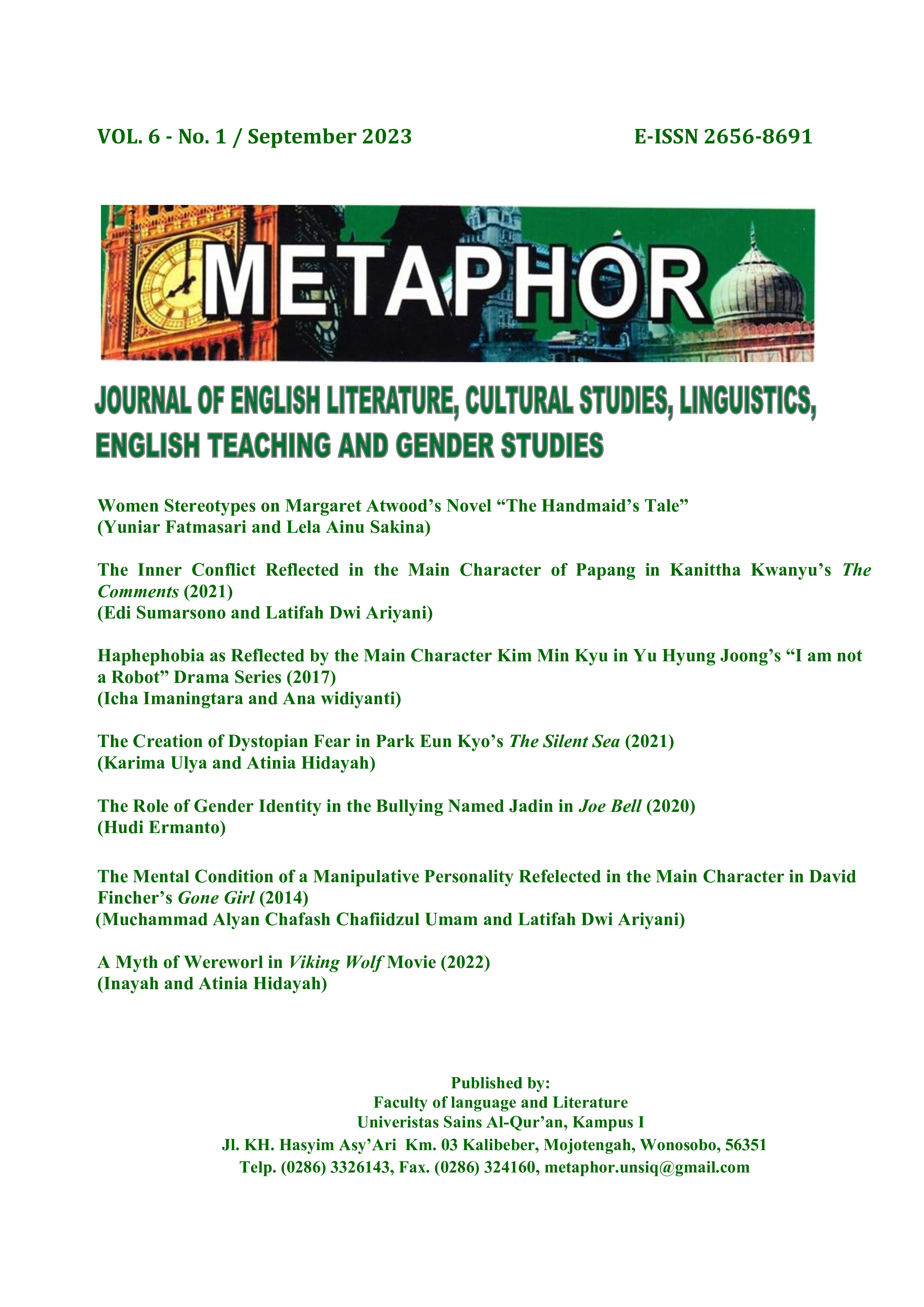A Myth of Wereworl in Viking Wolf Movie (2022)
Keywords:
myth, werewolf, viking, norseAbstract
This study aimed to analyze: (1) how the Viking Wolf movie (2022) presents the werewolf myth (2) how blod represents the transformation process of human into werewolf in Viking Wolf movie (2022). The study uses descriptive qualitative method to analyzed and described in descriptive form. In this research, applies Roland Barthes' semiotic theory as a grand theory and relevant source related to werewolf mythology. The object of research is myth of werewolf in the Viking Wolf movie (2022) directed by Stig Svendsen. The primary data used is a movie entitled Viking Wolf (2022) and also used supporting data from journals, books and other. The method of collecting data includes watching and reading, identifying, selecting, and classifying. The method of analyzing the data by displaying, explaining, and interpreting. The result of the study : (1) representation of the werewolf myth in Viking Wolf movie (2022), namely, the Vikings' obsession with animal power, the full moon; the culmination of mystical power and unchanged eyes symbolize human identity and human-like werewolf, (2) representation of blood in the transformation process of human into werewolf throught dreams in Viking Wolf movie (2022), namely, half-bloody; sensitive sense and changes habits and blood covers the body; animal instint and physical changes.
References
----------(1968). Elemen-Elemen Semiologi. (M. Ardiansyah.
Translation). Yogyakarta: BASABASI
----------(1988). The Semiotic Challenge. United Kingdom
Barker, Chris. (2003). Cultural Studies – THEORY AND PRACTICE. Second
Edition. SAGE: London
----------(2004). The Sage Dictionary of Cultural Studies. SAGE: London
Baring-Gould, Sabine. (1865). THE BOOK OF WERE-WOLVES. Smith, E lder
and CO: London. The Project Gutenberg eBook. Downloaded on July 23rd,
2023.
https://www.gutenberg.org/cache/epub/5324/pg5324-images.html
Cobley, Paul & Jansz, Litza. (1999). INTRODUCING Semiotics. Icon Books-
Totem Books: New York. Downloaded on November 29th, 2023.
https://www.felsemiotica.com/descargas/Cobley-Paul-and-Jansz-Litza-Introducing-Semiotics.pdf
Durn, Sarah. (2021). The Long, Hidden History of the Viking Obsession With
Werewolves. Atlas Obscura. Accessed on September 11th, 2023. https://www.atlasobscura.com/articles/hidden-history-viking-wolf-warrior-werewolf
Moleong, Lexy J. (2007) . Metodologi Penelitian Kualitatif. Bandung: PT Remaja
Rosdakarya Offset
O’ Donnell, Elliott. (1912). WEREWOLVES. Project Gutenberg. Methuen and
CO. Ltd: London. Downloaded on July 23rd, 2023.
https://www.gutenberg.org/cache/epub/26629/pg26629-images.html
Stewart, Caroline Taylor. (1909). THE ORIGIN OF THE WERWOLF
SUPERSITION. Project Gutenberg. University of Missouri: Columbia.
Downloaded on July 23rd, 2023.
https://www.gutenberg.org/cache/epub/44134/pg44134-images.html
Scott, Jess. (2023). The Werewolf in Norway: Everything You Need to Know.
Article Mythology. Accessed on October 1st, 2023.
https://www.lifeinnorway.net/werewolf-in-norway/
Wargs. (2023, July 18). Tolkien Gateway. Accessed on October 2nd, 2023.
https://tolkiengateway.net/wiki/Wargs



